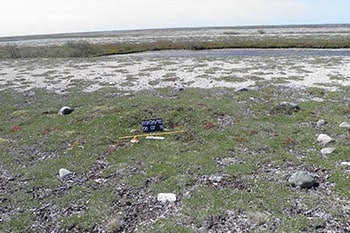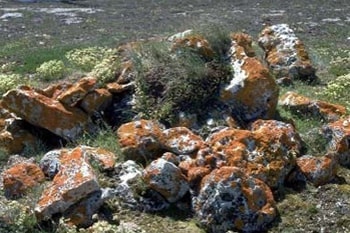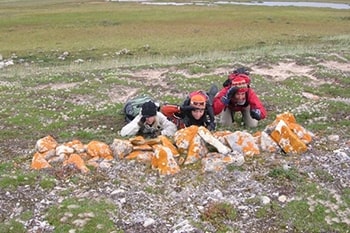Sandra Hollender
Wapusk National Park
Sandra Hollender has not yet set foot in Wapusk National Park, but she plays a vital role in protecting its history.
Sandra is a Cultural Resource Management Advisor with Parks Canada, meaning that she is responsible for coordinating projects related to any resources located within the park. Parks Canada defines cultural resources as “a human work, an object, or a place that is determined, on the basis of its heritage value, to be directly associated with an important aspect or aspects of human history and culture.” Sandra ensures these items are inventoried and monitored, kept in good condition and that any risks to the items are considered.

At 11,475 square kilometres, and with such diverse vegetation zones, Wapusk presents immense possibilities in terms of cultural resources. However, only a small portion of the park has been explored at this time in large part because of the park’s sheer size. Large swaths of it present accessibility challenges due to thick vegetation and the degree of concentrated effort it takes to properly analyze the area.
“It’s a vast park and we know very little about what’s there,” Sandra said.
Generally, the artifacts that are discovered in Wapusk remain onsite. In fact, only 34 have been taken from the park, either for conservation in Winnipeg or for display at the Parks Canada Visitor Centre in Churchill. Many of these removed artifacts were not collected by Parks Canada, but came into the Agency’s care later on.
“Thirty-four in the grand scheme of Parks Canada is nothing,” Sandra said. “If we find something, we usually keep it on the ground unless it is threatened. If we know that it’s in an area of high activity like where tourists are going to be and it’s something that’s easily picked up and put in a pocket … or if it is otherwise at risk, only then we would collect it.”

The discovered resources are categorized into themes: pre-contact (such as tent rings, hunting blinds and food caches), fur trade era (such as trappers’ cabins and navigation towers) and modern era including military and scientific research (such as military test rockets and navigation towers).
What happens to the resources?
When an artifact is collected, any rust or dirt will be carefully cleaned off in our Parks Canada laboratory to help preserve it. Generally, though, Wapusk naturally provides a safe environment for artifacts not collected.
“In my field, I would love to wrap everything in bubble wrap and put it in a box and put it in a dark, cool, dry space and preserve everything as it is,” Sandra said. “But we kind of naturally have that with Wapusk. There’s a little bit of isostatic rebound from the ground raising a bit, but there isn’t a lot of frost heave, there isn’t a lot of scouring because of ice. There aren’t people there all the time having impacts. We don’t have a lot of overland vehicles, so we’re very lucky.”
However, there are still threats to on-site artifacts from both humans, wildlife and nature. These include caribou herds kicking over rocks and churning up dirt, snow geese disturbing the ground by ripping up low vegetation and animals burrowing. Wildfires are a potential threat, though to this point, blazes caused by lightning have occurred primarily in areas with few recorded archaeological sites.
What’s next for cultural resource management at Wapusk?
In the future, there are plans to ramp up cultural resource management efforts in Wapusk. While there are 87 identified cultural resources in the park, including landscape features, building and engineering works and archaeological sites, only about half have been properly verified. Many are informant-reported, talked about in literature or were spotted during a flyover and have never been properly documented.

Sandra hopes to partner with Indigenous groups to bring community members into the park. In addition to reconnecting with this traditional territory, local Indigenous peoples who use the park can help us understand the land and its past use. Often, they are better able to provide more detail on cultural artifacts and identify things that others might miss. There are at least three different cultural groups known to have utilized the land that is now defined as Wapusk’s northern tip, so researchers are unable to confidently associate artifacts with a specific cultural group.
“We want Indigenous peoples to come walk the with us because there’s often subtle things that we might walk by,” Sandra said. “There’s a lot of learning that can be done.”
Ultimately, Sandra hopes that by learning more about the cultural resources discovered onsite it will be possible to discover more about the way people used the land. Questions range from whether travellers regularly camped at particular spots or if the sites were opportunistic to if they cooked or ate cold food when set up for the night.
The answers to these questions, and more, will hopefully be uncovered as researchers scour the park in the years to come.- Date modified :